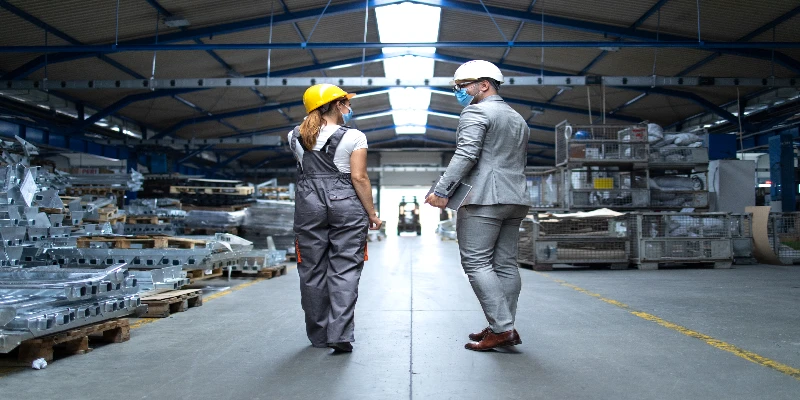
The Mexican government has recently announced the revocation of tariffs on foreign aluminum as a strategic move aimed at stimulating economic growth and enhancing competitiveness in key industrial sectors. This significant policy shift comes as part of broader economic reforms intended to attract foreign investment, reduce production costs, and bolster the national economy amid global economic uncertainties. Aluminum, a critical component in various industries including automotive, construction, and electronics, has been at the center of trade discussions due to its vast applications and importance in supply chains. By eliminating these tariffs, Mexico positions itself as a more attractive manufacturing hub, potentially influencing global trade patterns and strengthening its industrial sectors.
Background on Mexico's Aluminum Tariffs
Historical Context
Mexico's journey with aluminum tariffs has been complex, influenced by both domestic economic policies and international trade relations. Initially, these tariffs were introduced as a protective measure to shield local producers from the volatility of global markets and the influx of cheaper imports. These tariffs aimed to ensure that Mexican aluminum producers remained competitive, supporting local employment and sustaining industrial output.
Purpose of the Tariffs
The primary rationale behind the implementation of aluminum tariffs was to counteract the disadvantages faced by domestic manufacturers against foreign producers who benefited from lower production costs and government subsidies. These tariffs were also a response to the perceived threats of dumping, where countries export large quantities of a product at prices below market value, undermining local industries.
Affected Industries
The aluminum tariffs impacted a wide array of sectors within Mexico, most notably:
- Automotive: As the sixth-largest auto manufacturer globally, Mexico relies heavily on aluminum for parts like engines, frames, and body panels. The tariffs had previously added significant costs to the production process.
- Construction: Aluminum is a key material in modern construction projects, used for everything from structural components to fixtures and fittings. The tariffs had inflated costs for developers and, by extension, consumers.
- Electronics: With a burgeoning electronics manufacturing sector, particularly in areas like Guadalajara, known as Mexico’s Silicon Valley, aluminum tariffs had increased production costs for items ranging from consumer electronics to industrial machinery.
The decision to revoke these tariffs did not come lightly; it was the result of extensive economic analyses and negotiations, reflecting a shift in strategy towards greater economic openness and integration into the global market. This change is anticipated to bring several benefits, including lower costs for manufacturers, increased foreign investment, and enhanced export capabilities. However, it also poses challenges and requires adjustments from domestic industries accustomed to protectionist measures. As Mexico embarks on this new path, the global economic community watches closely, anticipating the ripple effects of this policy on international trade dynamics and industrial growth.
What are the Reasons for the Tariff Revocation?
The Mexican government has decided to revoke aluminum tariffs to strengthen economic growth, enhance industrial competitiveness, and strengthen international trade relationships.
Government Statements and Policy Objectives
The Mexican government, underlining the necessity to foster a more competitive and resilient economy, has outlined several objectives behind the decision to lift aluminum tariffs. According to official statements, this move is part of a broader economic strategy aimed at enhancing Mexico's position in the global market. The government's policy emphasizes creating an environment where industries can thrive without the hindrance of unnecessary costs, thereby attracting more foreign direct investment and encouraging technological advancement within domestic industries.
Economic Goals: Stimulating Industrial Growth, Reducing Costs for Manufacturers
One of the principal economic goals with the revocation is to stimulate industrial growth across several sectors directly impacted by aluminum costs. By removing tariffs, the government aims to reduce production expenses for local manufacturers, enabling them to compete more effectively both domestically and internationally. Lower aluminum prices can lead to reduced costs for goods and services, fostering growth, increasing production capacities, and enhancing overall economic performance.
International Trade Relations
The revocation also serves a strategic role in strengthening international trade relations, particularly with countries that are major aluminum exporters to Mexico, such as Canada, China, and the United States. By eliminating these tariffs, Mexico not only aligns itself more closely with international trade norms but also enhances its relationships with key trading partners, potentially leading to more favorable trade agreements and joint ventures in other sectors of the economy.
What Will Be the Economic Impact of Revoking Aluminum Tariffs?
The economic impact of revoking aluminum tariffs in Mexico is expected to be :
Immediate Effects on the Prices of Aluminum within Mexico
The immediate effect of the tariff revocation has been a noticeable decrease in aluminum prices across Mexico. This reduction has been welcomed by manufacturers and consumers alike, as it lowers the cost of goods and services that utilize aluminum, making them more affordable and competitive in both local and international markets.
Long-term Expectations for Industrial Growth
In the long term, the economic landscape is expected to benefit significantly from this policy change. Industries that rely on aluminum are projected to see heightened growth rates due to reduced operational costs and increased capital for reinvestment. This growth is anticipated to be sustainable and could help Mexico diversify its industrial base further.
Analysis of the Potential Increase in Jobs and Production Capabilities
With lower costs and increased demand for domestically produced goods, there is a potential for significant job creation within the affected industries. Increased production capabilities could lead to more employment opportunities in manufacturing, supply chain management, and ancillary services, supporting broader economic development and reducing unemployment rates.
Impact on Key Sectors
Automotive Industry
The automotive sector stands to gain considerably from the revocation of aluminum tariffs. As a major consumer of aluminum, reduced costs will enable automakers to decrease production expenses and invest in new technologies, such as electric vehicle components, which are aluminum-intensive. This could bolster Mexico’s reputation as a leading automotive producer on the global stage.
Construction
In the construction industry, aluminum is essential for various applications, from framing materials to fixtures. The lower costs resulting from the tariff removal are expected to drive the growth of infrastructure projects, making large-scale construction more economically viable and potentially speeding up the development of both commercial and residential properties.
Electronics
For the electronics industry, where precision and cost-effectiveness are paramount, the reduction in aluminum prices could lead to enhanced competitiveness of Mexican electronics on the international market. This could stimulate further investments in R&D and production facilities, enhancing Mexico’s standing in the global electronics market.
Statistical Analysis and Data
Table 1: Comparison of Aluminum Prices Pre and Post Tariff Revocation
| Year | Average Price per Ton Before Tariff Removal | Average Price per Ton After Tariff Removal |
|---|---|---|
| 2021 | $2,300 | $2,100 |
| 2022 | $2,400 | $2,200 |
Table 2: Yearly Aluminum Import Volume Before and After Tariff Changes
| Year | Import Volume Before Tariff (Tonnes) | Import Volume After Tariff (Tonnes) |
|---|---|---|
| 2021 | 100,000 | 120,000 |
| 2022 | 110,000 | 135,000 |
Table 3: Growth Projections for Key Industries Benefiting from Tariff Removal
| Industry | Projected Growth Before Tariff Removal | Projected Growth After Tariff Removal |
|---|---|---|
| Automotive | 5% | 8% |
| Construction | 3% | 6% |
| Electronics | 4% | 7% |
International Trade Implications
Reactions from Major Trade Partners and Aluminum Exporters
Major trade partners and aluminum exporters like the United States, Canada, and China have responded positively to Mexico's tariff revocation, viewing it as a step towards more open and equitable trade relations. This move is expected to enhance bilateral trade ties and could lead to reduced trade barriers in other sectors.
Changes in Trade Dynamics and Potential Negotiations
The elimination of tariffs is likely to alter trade dynamics, encouraging a surge in aluminum imports while promoting negotiations on other reciprocal trade concessions. This could lead to broader economic partnerships and integrated supply chains.
Future Trade Policy Forecasts
Looking ahead, this policy shift suggests a more liberal trade stance by Mexico, potentially influencing future trade agreements and policies to favor more open market access and reduced tariffs across various industries.
Challenges and Criticisms
- Opposition from Domestic Producers: Domestic producers might oppose the revocation of tariffs due to fears of increased competition from cheaper, imported aluminum. This could potentially lead to job losses or reduced profits within local industries that rely on aluminum production.
- Economic Risks: Removing tariffs could lead to an over-reliance on imported aluminum. This dependency could become problematic if international prices rise or if supply chains are disrupted, impacting domestic industries that rely on these imports.
- Market Volatility: The aluminum market might experience increased volatility as a result of these policy changes. The fluctuation in import volumes and prices can affect procurement strategies and operational planning for businesses that use aluminum.
The removal of tariffs might lower costs for industries that use aluminum, leading to expanded production, increased investments, and potentially lower prices for consumers. Increased import reliance could expose the economy to global supply chain vulnerabilities and market volatility. Additionally, domestic producers might suffer from the increased competition. This decision could be strategically significant for Mexico as it positions itself as a competitive player in the global market, potentially attracting foreign investment but must balance this with the health of domestic industries.
As we conclude this discussion, remember that SIXM is here to support every step of your procurement journey in Mexico. We value your partnership and are excited to continue delivering excellence in sourcing support.

